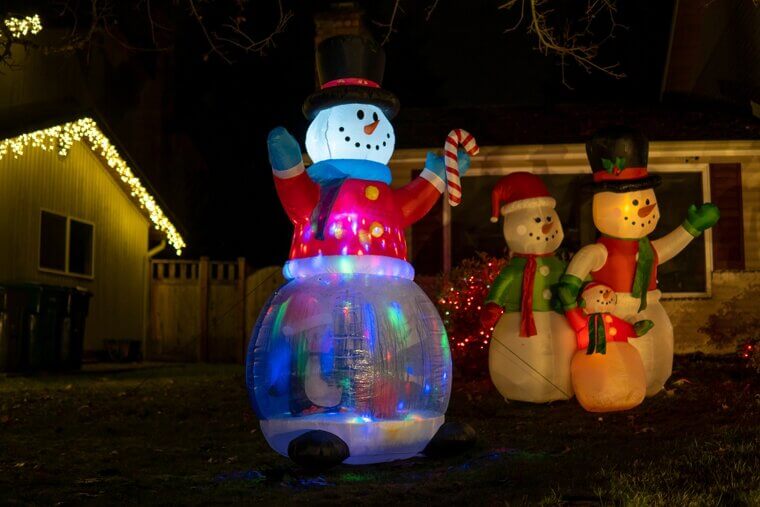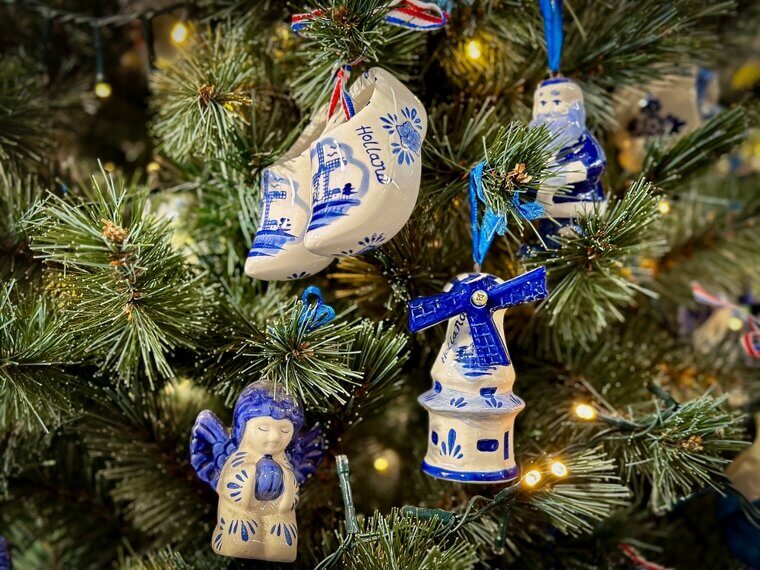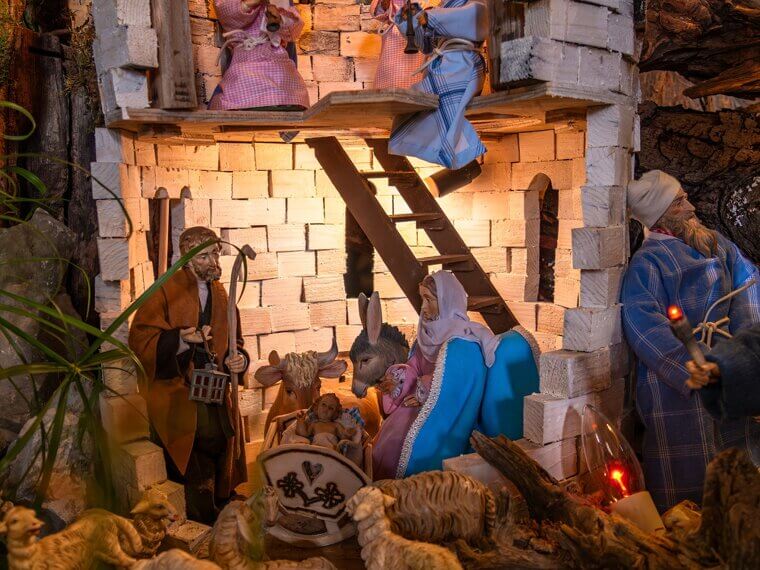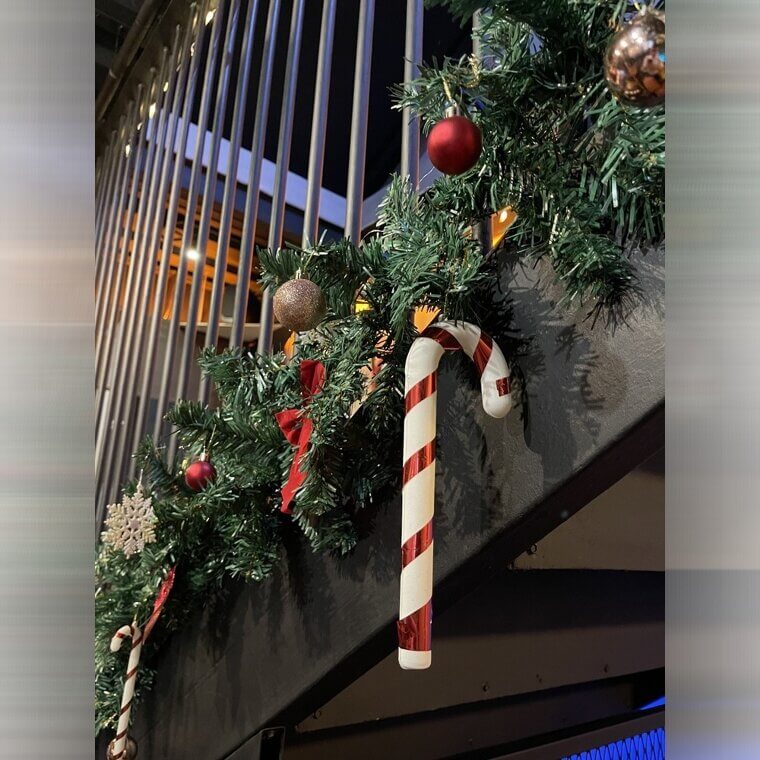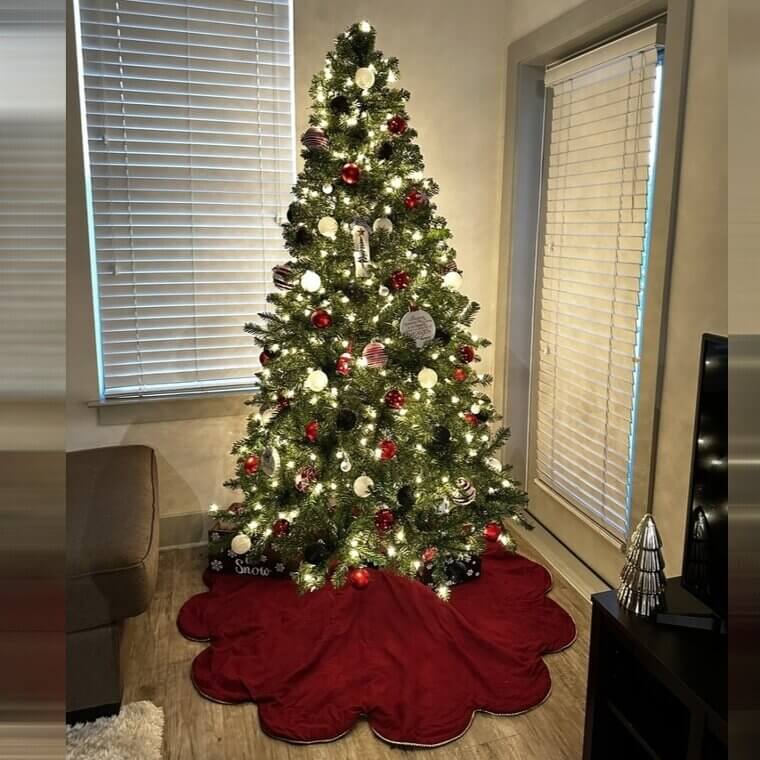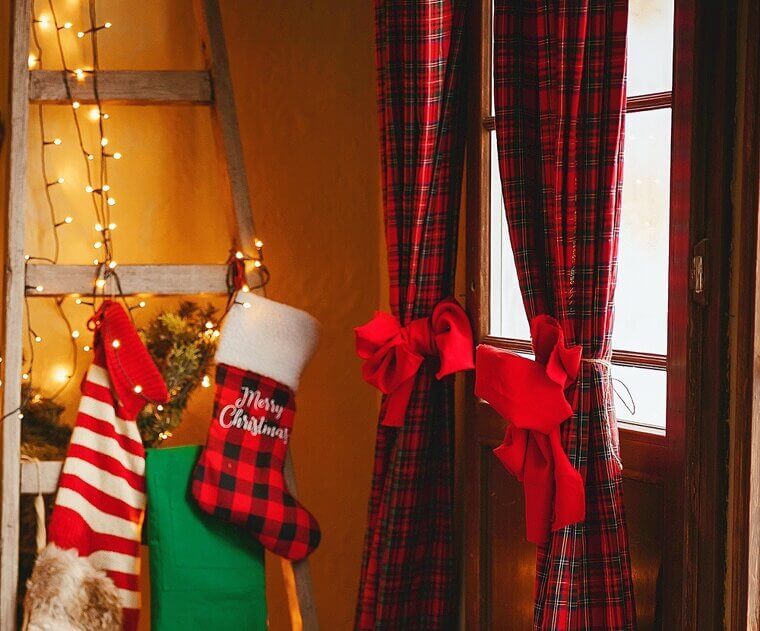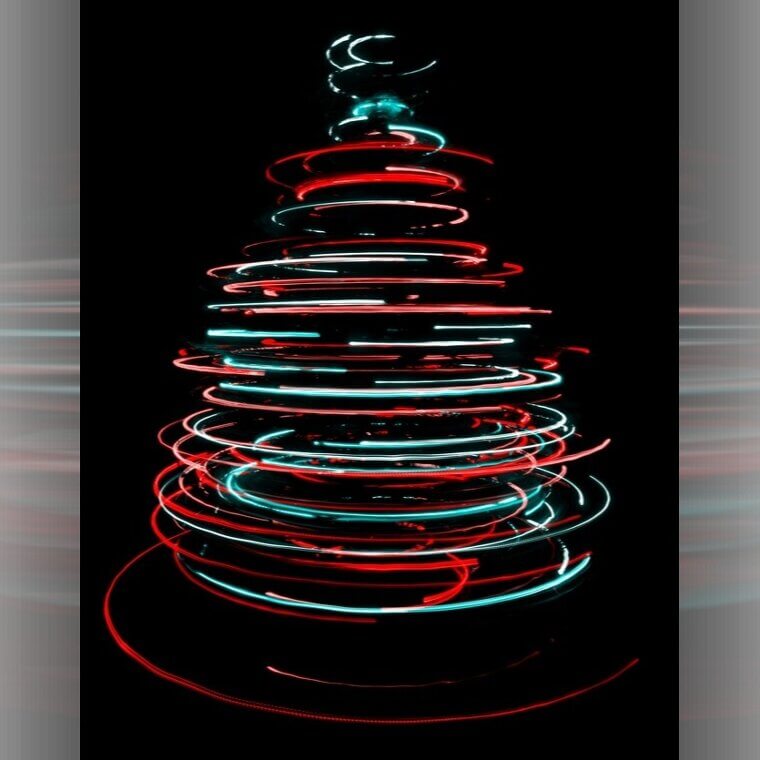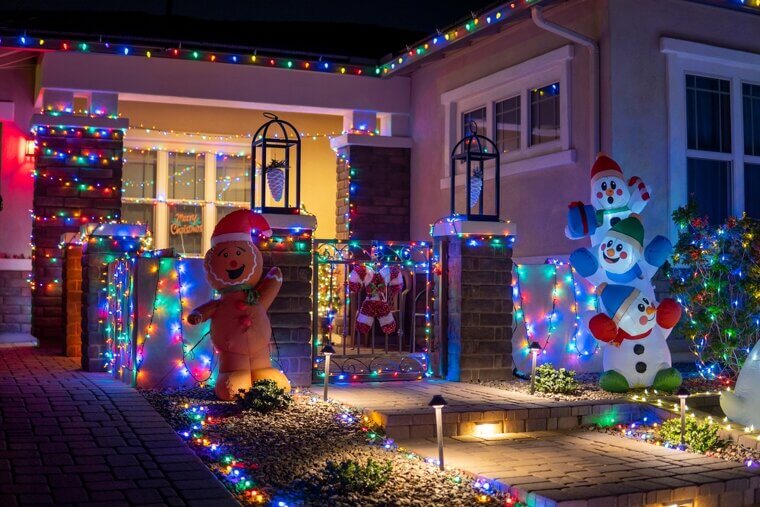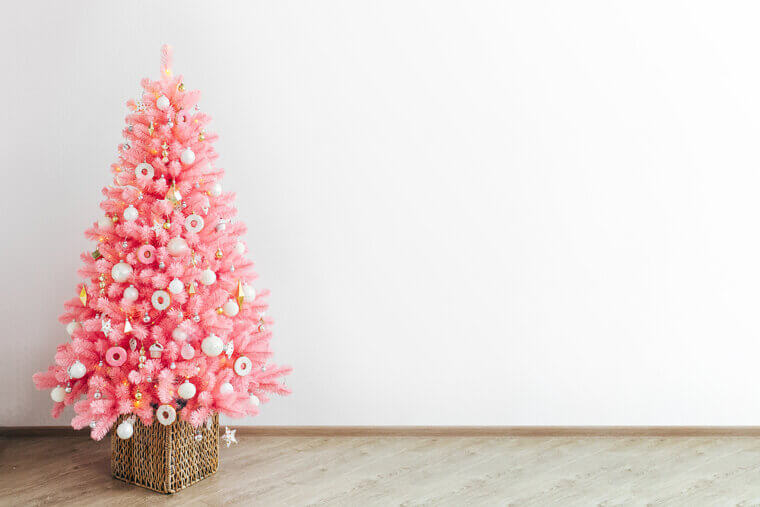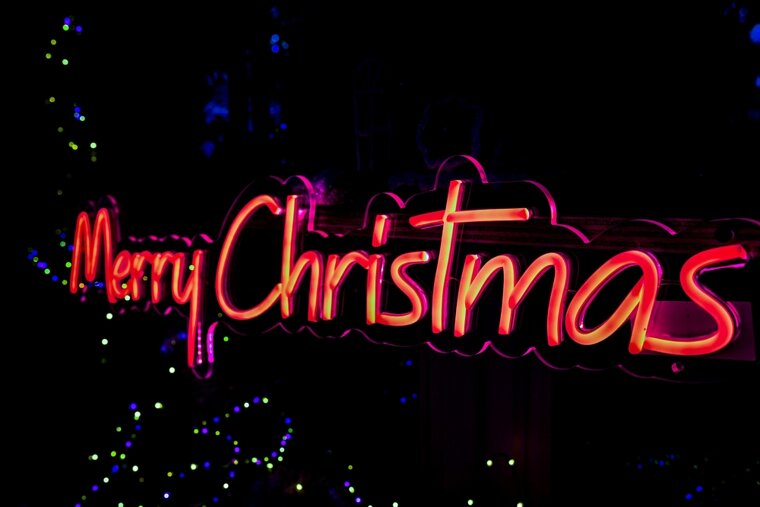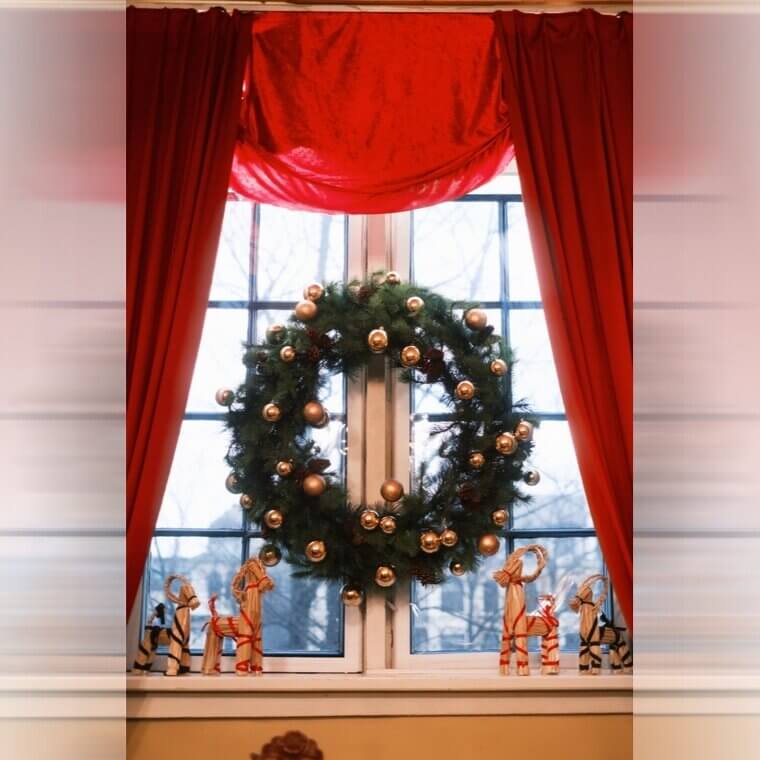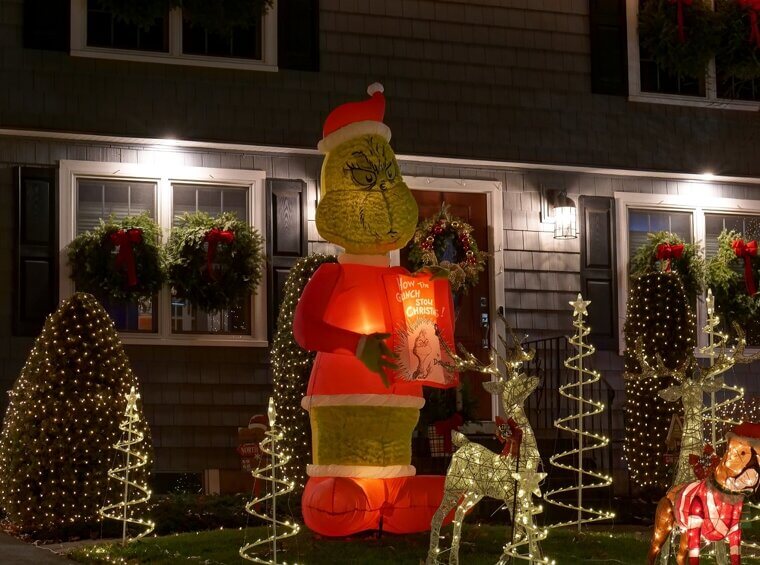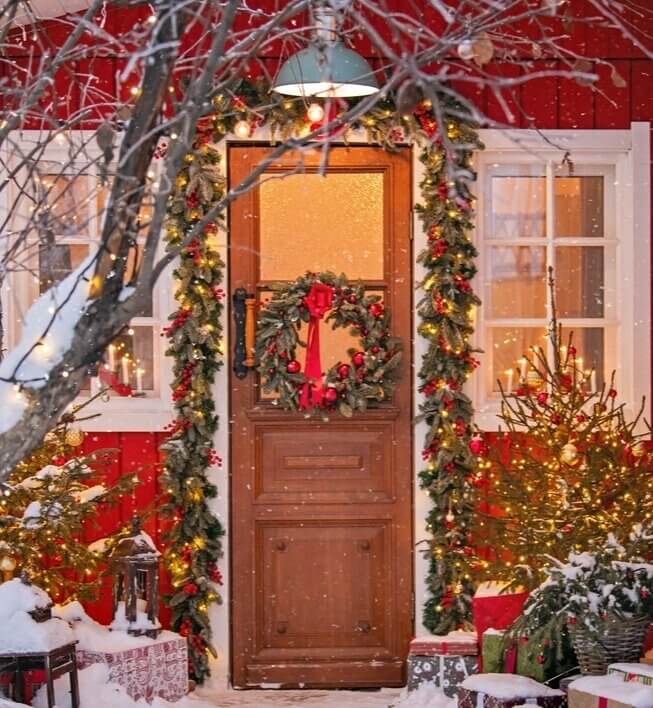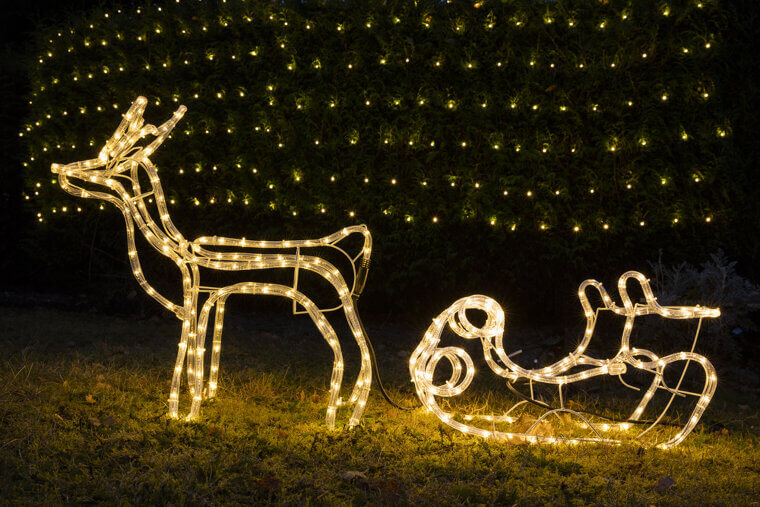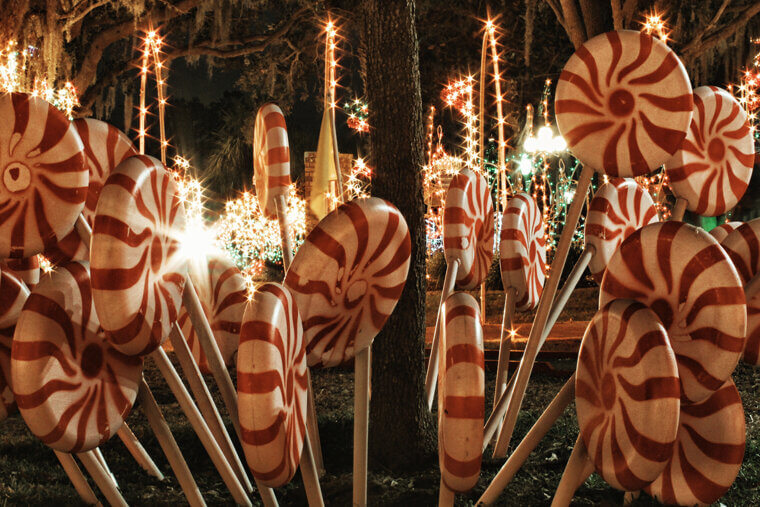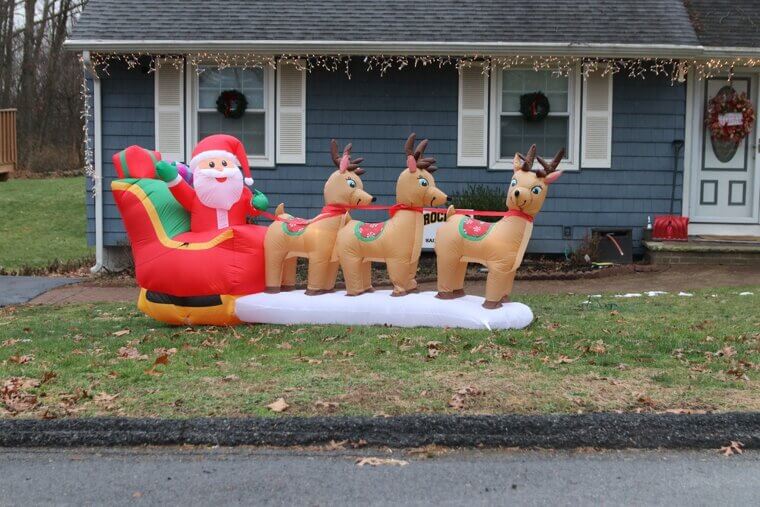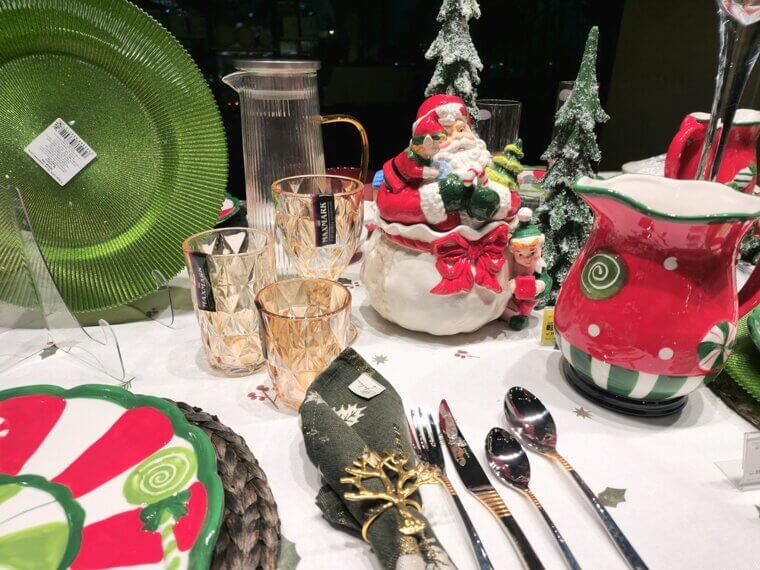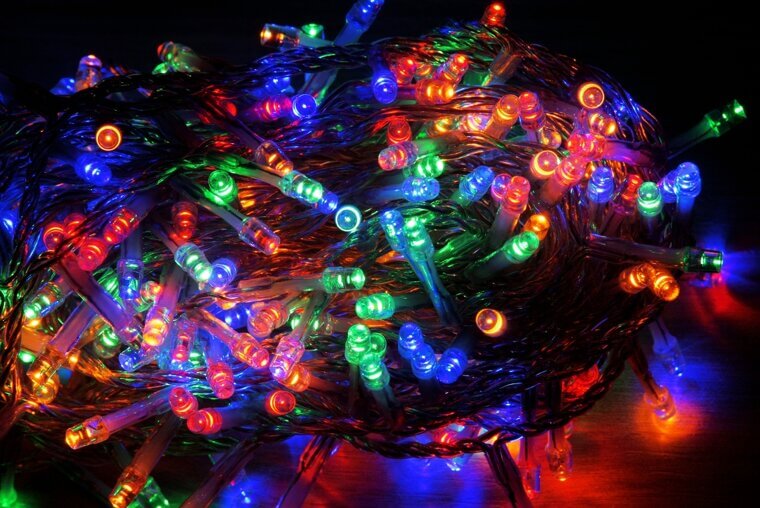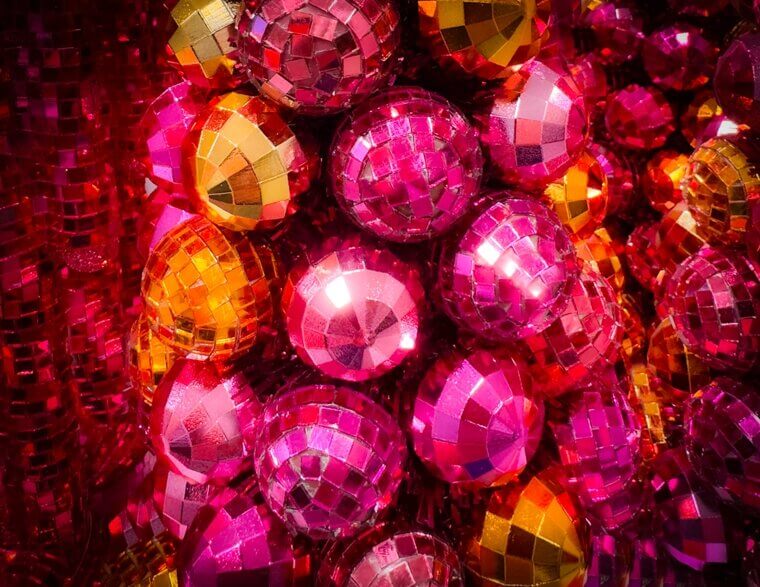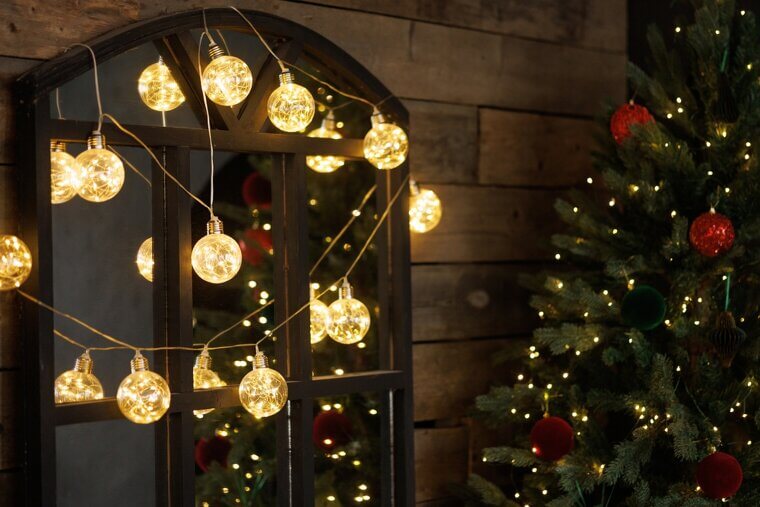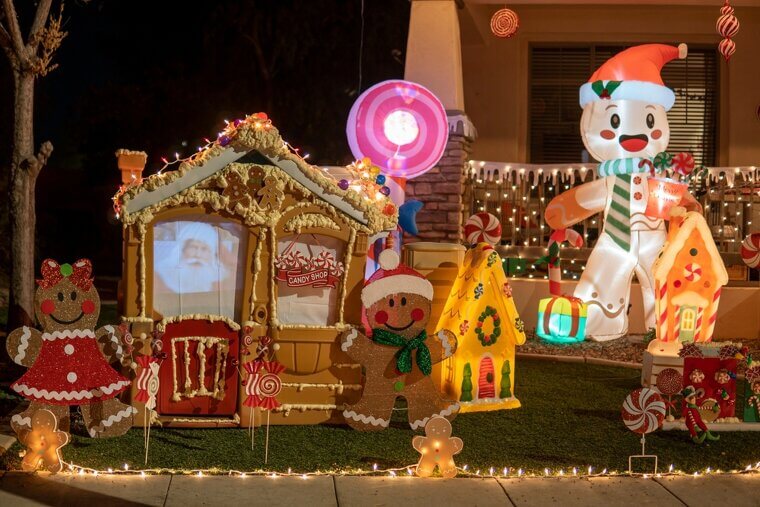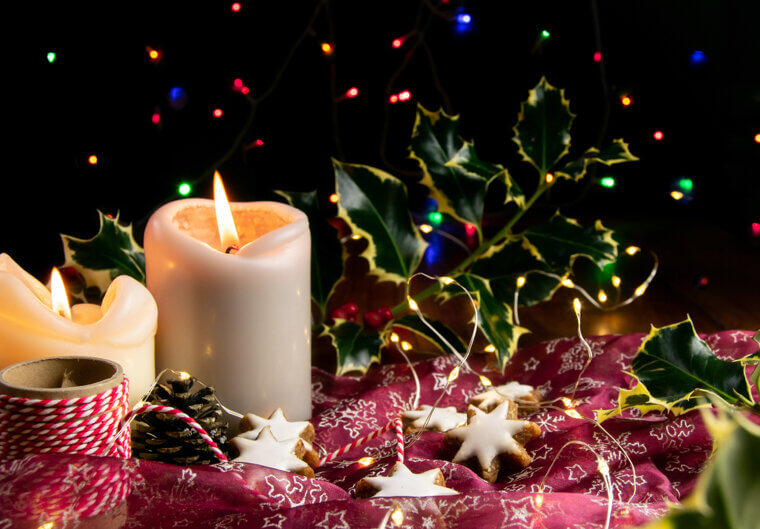Inflatable Snowmen
Inflatable snowmen are easy to set up, but they seldom add true charm to your home. Their cartoonish faces and oversized shapes can clash badly with more traditional decor. During the day, deflated snowmen lying on the lawn look like collapsed plastic bags, creating an impression of untidiness. At night, constant blower noise and visible cords detract from any ambiance you’re trying to create.
As fabric fades and seams strain, they appear even cheaper. Simple, well-lit traditional snowman figures or subtle outdoor decor elevate curb appeal far more effectively than giant inflatables.
Christmas Trees With Specific Themes
Highly specific themed trees—think “candy factory,” “tropical beach,” or “all sports memorabilia”—can quickly cross into novelty territory. Instead of feeling timeless, the tree becomes a giant prop, clashing with the rest of your home’s style. Bold color palettes, branded ornaments, and hyper-literal decor read more like a store display than a cozy family tree. These themes also age quickly, making your home feel dated as trends change.
A tree that reflects your overall decor and uses a restrained palette usually looks more upscale, cohesive, and appealing to visitors or buyers.
Oversized Plastic Figures
Those towering plastic Santas, snowmen, and cartoon characters might seem festive, but they rarely flatter your property. Oversized molded figures compete with your home’s scale, making even a beautiful facade look small and toy-like. The shiny plastic surface often looks cheap in daylight and even harsher under spotlights at night. Over time, sun fading, cracks, and peeling paint make them appear downright neglected.
Instead of a classic holiday vignette, you end up with something that resembles an abandoned amusement park, distracting from your home’s natural charm and perceived value.
Too Much Tinsel
A little tinsel can catch the light beautifully, but piling it on everything quickly feels chaotic. When garlands, trees, mantels, and even doorways drip in metallic strands, the space starts to resemble a cluttered party store. Tinsel also reflects light harshly, making rooms feel busier and less relaxing. It tangles easily, sheds everywhere, and can cheapen even high-quality ornaments or greenery.
Rather than highlighting your decor, excess tinsel competes with it. Carefully edited touches of shimmer look elegant; a tinsel explosion simply screams mess, distraction, and low-budget holiday styling.
Sequined Santa Hats
Sequined Santa hats can be fun at a party, but when they become a central decor element, things feel kitschy fast. Bright sequins catch light in a harsh, glittery way that clashes with softer, more refined holiday textures like velvet, wool, or greenery. When they’re scattered on chairs, hung on hooks, or lined up on a mantel, they start to resemble costume-shop leftovers.
The look is more novelty photo booth than stylish home. A few well-chosen textiles feel luxurious; an army of sparkly hats drags the whole aesthetic down.
Visually Overwhelming Wrapping Paper
Wrapping paper covered in neon colors, busy patterns, and clashing graphics may look playful, but stacked under a tree it becomes visual noise. When every gift screams for attention, the overall effect feels chaotic instead of festive. The tree, ornaments, and furniture around it get lost behind a loud pile of mismatched prints. Cheap, overly shiny paper can also crease and tear easily, emphasizing a lower-quality look.
Coordinating a few complementary patterns and tones makes gifts feel like part of your decor instead of clutter, instantly elevating your holiday aesthetic.
Over-The-Top Nativity Sets
Nativity sets can be meaningful, but when they’re oversized, flashing, or overly crowded with accessories, they quickly overwhelm a room. Multiple spotlights, glittery faux hay, animatronic animals, and extra figurines create a scene that feels theatrical instead of reverent. The display dominates furniture and distracts from other decor, making the room feel cramped and chaotic. Guests focus on the spectacle, not the sentiment.
A thoughtfully scaled, simply lit nativity blends into your home’s style, while an over-the-top version can cheapen both the spiritual message and your overall design.
Overdoing the Candycanes
Candycanes are a nostalgic classic, but when they appear on every surface, the charm quickly wears off. Striped patterns on pillows, wreaths, mugs, yard stakes, tree ornaments, and wrapping paper all at once create a dizzying effect. Too much red and white striping makes your home feel more like a themed candy shop than a cozy living space. Plastic lawn candycanes fade and tilt, adding to the visual clutter outside.
Used sparingly, candycane accents can look whimsical and sweet; overused, they become cartoonish, lowering the perceived sophistication of your decor.
Going All Out With the Table Setting and Decor
Layering chargers, multiple plates, elaborate napkin rings, place cards, favors, several centerpieces, and scattered ornaments can quickly overwhelm a holiday table. While the goal might be luxury, the result often looks cramped and theatrical, leaving guests wondering where to put their glasses. Overcrowded tables are also hard to navigate, making dining awkward. When every inch is covered, spills look worse and clean-up feels impossible.
A few beautiful pieces, good linens, and thoughtful centerpieces can feel truly high-end, while an overly staged, jam-packed tablescape tends to read as fussy, impractical, and oddly cheap.
Unnecessary Tree Skirts
Tree skirts featuring silly sayings, cartoon characters, or loud novelty prints quickly draw attention for the wrong reasons. Instead of framing your tree beautifully, they compete with gifts and ornaments, dragging the whole look down. Cheap fabrics wrinkle easily, collect pine needles, and photograph poorly. When the skirt doesn’t match your room’s palette or style, it sticks out like a costume.
A simple, well-made skirt in a neutral color or subtle pattern blends seamlessly into the background. Quirky designs may be fun initially, but they often make your tree and living room appear less refined.
Overdoing Plaid
Plaid is a winter staple, but when it appears on blankets, pillows, stockings, ribbons, tablecloths, and even dishware, the pattern overload becomes overwhelming. Competing tartans in different scales and colors can clash badly, making rooms feel hectic and visually tiring. Too much plaid also risks sliding into costume territory, as if the house is dressed up rather than naturally decorated.
Subtle touches—in a throw blanket or a few cushions—add cozy charm. Flooding the space with checks and stripes, however, diminishes elegance and makes even high-quality pieces seem less refined.
Giant Bows Everywhere
Huge bows on doors, banisters, cars, and even appliances might seem festive, but they easily slip into overdone territory. Oversized loops and cascading ribbons take up visual space without adding much sophistication. Bright synthetic fabrics often look cheap, wrinkle quickly, and collect dust. When multiple large bows appear throughout a home, the effect can feel more like a mall promotion than a warm holiday setting.
Smaller, well-chosen ribbons used sparingly look elegant and thoughtful. Giant bows everywhere, however, turn your decor into something that feels staged, commercial, and significantly less upscale.
Too Much Faux Snow
Spraying faux snow on every window, garland, wreath, and surface can quickly make your home look less magical and more messy. Heavy artificial snow often dries unevenly, clumps in awkward spots, and sheds when touched. On darker surfaces, it can resemble dust rather than fresh powder. Excess around light fixtures and vents also feels careless, hinting at rushed decorating rather than intentional styling.
Guests notice residue on floors and furniture, which subtly signals neglect. Light, strategic applications can feel wintry and elegant; coating everything in fake snow just feels forced and cheap.
Revolving Christmas Trees
A rotating Christmas tree stand might sound glamorous, but in practice it can feel more like a store display than a cozy living room feature. The constant motion draws attention away from conversations, making the tree a perpetual spectacle. Ornaments swing, cords must be carefully hidden, and the mechanism itself can hum or wobble. Rather than highlighting a few beautiful angles, you end up showcasing every awkward gap and mismatched ornament.
A stationary tree invites lingering moments; a spinning one feels gimmicky, undermining the warmth and perceived sophistication of your holiday decor.
Signs With Season's Greetings
A tasteful “Season’s Greetings” sign can be welcoming, but cluttering your home with multiple phrases in different fonts and colors quickly feels chaotic. When every wall, shelf, and lawn stake shouts a holiday message, the sentiment loses meaning. Cheap materials, glittery finishes, and trendy slogans date the decor quickly. The space begins to resemble a discount store aisle rather than a thoughtfully designed home.
Choosing one or two well-made signs that complement your style looks intentional and polished. Overdoing the greetings, however, makes your holiday decor feel busy, generic, and decidedly less classy.
Random Mistletoes
Hanging mistletoe strategically can be charming, but scattering it in random spots around the house feels awkward and forced. Doorways, hallway corners, lamp bases, and even bathroom mirrors become cluttered with dangling sprigs that confuse guests more than delight them. Too many bunches also cheapen the tradition, turning a sweet holiday moment into a gimmick. Plastic mistletoe looks particularly fake up close, especially when it’s dusty or crooked.
A single, pretty display over a central doorway feels intentional and romantic; dozens of misplaced bunches simply make your home look disorganized and silly.
Over-Doing Outdoor Decor - Less Is More
Filling every inch of your yard with lights, figurines, signs, and props can make your home look more like a holiday outlet than a residence. When there’s no negative space, guests don’t know where to rest their eyes. Competing elements—both lit and unlit—fight for attention, weakening the impact of any single piece. Overdone decor can also highlight clutter, cords, and patchy landscaping.
A few well-placed, quality decorations emphasize architecture and create atmosphere. Editing down and embracing simplicity often makes your home feel more luxurious, intentional, and appealing from the street.
Aluminum Trees
Retro aluminum trees can be stylish in small doses, but full-size metallic trees dominate a room in the wrong way. Their reflective branches throw harsh, cold light and can clash with warm, cozy decor. When paired with multicolor rotating lights, the whole display starts to resemble an old department-store window instead of a welcoming home. These trees also highlight fingerprints, dust, and bent branches, aging quickly.
A small tabletop aluminum tree in a mid-century setting can be chic; an enormous, shiny focal point risks making your space feel sterile, gimmicky, and less valuable.
Neon Decor
Neon holiday signs and glowing accents may seem trendy, but they can quickly overpower a space. Bright tubes spelling out festive phrases or symbols compete with softer, traditional elements like candles and greenery. The harsh light flattens textures, making everything around it appear less refined. When multiple neon pieces are used together, the room begins to feel more like a bar or arcade than a home.
A single, subtle neon accent might work in a modern space. A full neon takeover, however, undermines warmth and sophistication, dragging down your home’s overall aesthetic.
Window Decor That Blocks Sunlight or Views
Stuffing windows with heavy clings, thick garlands, painted scenes, or layered ornaments can block natural light and beautiful views. While the intention is festive, the result is often a darker, more cramped-looking space. Guests notice when once-open windows feel closed off or cluttered. Exterior decorations that cover glass also detract from your home’s architecture and make the facade look busier than necessary.
Light, airy treatments—like simple wreaths or minimal silhouettes—maintain brightness and sightlines. Overloading windows, on the other hand, signals less thoughtful decorating and subtly lowers the perceived quality of your home.
Too Many Decor That References Holiday Movies
A few subtle nods to favorite holiday films can be charming, but turning your home into a movie-reference scavenger hunt gets tacky fast. When every pillow, sign, mug, ornament, and figurine quotes a line or showcases a character, the space starts feeling like themed merchandise, not personal decor. Clashing fonts, colors, and graphics create visual chaos. The references also age quickly as trends change.
Choosing one or two tasteful pieces keeps things playful without overwhelming the room. Overloading on movie decor makes your home feel less timeless and more like a crowded gift shop.
Garlands Everywhere (Trees, Staircases, Mantels, Etc. )
Garlands are beautiful, but draping them over every available surface quickly becomes suffocating. When stair railings, mantels, mirrors, headboards, and doorways all sport thick greenery, rooms start feeling smaller and darker. Heavy, overly decorated garlands shed needles, glitter, and ornaments, adding to visual and physical mess. The eye has no place to rest, making even spacious homes feel cramped.
Using garlands selectively—perhaps on a staircase and mantel only—lets those features shine. Covering everything in greenery reads less like a designer’s touch and more like overcrowded store decor, diminishing your home’s elegance.
Random Light-Up Reindeer
Light-up reindeer can be elegant when thoughtfully arranged, but placing them randomly around the yard breaks the effect. Single figures standing alone in odd corners or awkwardly facing fences look more accidental than artistic. When styles and sizes don’t match, the herd feels cobbled together from clearance sales. Cords, stakes, and leaning frames add to the impression of disarray.
A coordinated grouping in one area creates a graceful focal point. Scattered, mismatched reindeer, however, make your outdoor decor feel disorganized and inexpensive, weakening your home’s attractiveness and curb appeal.
Dancing Santa Figurines
Mechanical Santas that sing, shimmy, and wave can quickly go from amusing to annoying. Their repetitive songs, jerky movements, and plastic features feel more toy aisle than tasteful decor. When several appear throughout the house, the constant noise and motion create sensory overload. Guests may feel more like they’re in a novelty shop than a welcoming home. These figurines also age poorly, with batteries weakening and mechanisms sticking, which looks sad rather than festive.
A single playful piece is enough; a crowd of dancing Santas undermines any attempt at a refined holiday aesthetic.
Life-Sized Candy Decor
Huge plastic lollipops, towering peppermints, and oversized gumdrops might fit at an amusement park, but they rarely flatter a home. The exaggerated scale can make your yard look like a temporary photo backdrop, not a thoughtfully styled property. The bright colors often clash with your exterior paint and landscaping, creating a jarring, artificial vibe. Over time, weathering and fading make them appear even cheaper.
Instead of enhancing curb appeal, life-sized candy decor turns your house into a sugary movie set, distracting from its real architectural features and quietly diminishing its perceived value.
Inflatable Yard Decor
Those giant inflatable snowmen and Santa caravans are fun for kids, but they instantly cheapen your home’s exterior. Instead of charming curb appeal, the front lawn starts to resemble a big-box store display. The plastic fabric fades quickly, sags in weird places, and deflates into sad puddles during the day. Blowers hum loudly, extension cords snake everywhere, and the whole scene becomes visual clutter.
When neighbors or guests pull up, they notice chaos, not charm, and your property feels less elegant and far less valuable.
Over-The-Top Holiday Lighting
Covering every roofline, window, tree, and shrub in intense lights may seem impressive, but it usually overwhelms your property. Competing colors, animated sequences, music-synchronized displays, and flashing patterns create sensory overload. Instead of highlighting architectural features, the house disappears behind a wall of brightness. These displays also draw attention to cords, stakes, and timers, making everything feel more mechanical than magical.
Neighbors might enjoy the spectacle briefly, but it rarely reads as sophisticated. Strategic, well-placed lighting that suits your home’s style feels luxurious; going full festival mode just cheapens the overall look.
Mixing Christmas Themes
Combining rustic farmhouse, glam metallics, vintage nostalgia, and cartoon characters in one space can quickly create confusion. When every corner tells a different holiday story, your home starts to feel like a mismatched showroom rather than a thoughtfully curated environment. Plaid ribbons fight with crystal ornaments, neon accents clash with natural greenery, and nothing feels intentional. This lack of cohesion makes even expensive pieces appear random.
Choosing one main theme and a clear color palette anchors your decor. Mixing every style you like at once usually results in a busy, tacky atmosphere that diminishes overall appeal.
Blinking Multicolor Lights
Blinking multicolor lights can transform a cozy home into something closer to a roadside carnival. Constant flashing strains the eyes, overwhelms your architecture, and distracts from any thoughtful decor choices you made indoors. Instead of highlighting your home’s lines and landscaping, the lights drown everything in strobe-like chaos. They can also annoy neighbors and make your house feel loud, even when it’s completely quiet.
Soft white or warm-toned static lights feel intentional and sophisticated; frantic color-changing strands mostly signal clutter, noise, and a lack of cohesive design.
Mismatched and Bright Christmas Sweaters
Wearing one quirky sweater to a party is fun, but decorating with piles of loud, mismatched Christmas sweaters can quickly make rooms feel cluttered. Draping them over chairs, sofas, and bannisters turns cozy spaces into a chaotic closet. The bold graphics, clashing colors, and novelty designs compete with your actual decor. It’s hard to appreciate a beautiful tree when cartoon reindeer and blinking LEDs dominate every surface.
Rather than using sweaters as decorative props, keep them on people. Your furniture and rooms will look tidier, calmer, and far more polished without that extra visual noise.
Disco Balls
Adding disco balls to Christmas decor may sound festive, but they introduce a nightclub vibe that rarely suits a home. Their intense reflections scatter light in chaotic patterns, clashing with the warm glow of tree lights and candles. When they’re oversized or placed prominently, everything else in the room feels secondary. Even smaller disco ornaments can feel jarring if they don’t fit your overall style.
The result is less cozy winter evening, more dance floor. Classic glass ornaments or subtle metallic accents achieve sparkle without overwhelming the space or cheapening your holiday atmosphere.
Mismatched String Lights
Mixing different colors, bulb sizes, and light temperatures across your home and yard can create an unintentional patchwork effect. Warm white strands next to cool blue or multicolor lights clash and make everything look haphazard. Mismatched blinking patterns add to the chaos, suggesting leftover lights were simply thrown together instead of thoughtfully chosen. Inconsistent cords and random placement also draw attention.
A unified lighting plan—consistent color, brightness, and style—instantly feels more high-end. When your string lights look like a clearance-bin collection, the entire holiday display appears cheaper and far less cohesive.
Holographic Lights
Holographic lights that project swirling snowflakes, stars, or patterns onto your house might seem like an easy shortcut, but they rarely flatter the architecture. The projections often look fuzzy, repetitive, and disconnected from the actual lines of your home. Instead of highlighting windows, columns, or stonework, they wash everything in awkward, moving graphics. The constant motion also feels busy and can be distracting inside.
Over time, this kind of lighting starts to resemble a novelty gadget, not a design choice, and subtly signals lower quality and less thoughtful decorating overall.
Inflatable Holiday Houses
Inflatable miniature houses, complete with blinking windows and cartoon inhabitants, can turn a sophisticated yard into a plastic village in seconds. These pieces dominate lawns, blocking sightlines to your actual home and landscaping. Their bright colors, repetitive designs, and constant airflow noise feel more like a temporary commercial display than personal decor. When deflated, they slump into unsightly piles that look messy even during the day.
Over time, fading and patch repairs only emphasize their disposable nature. Instead of enhancing curb appeal, inflatable holiday houses usually pull attention away from your real property’s beauty and value.
Chaotic or Messy Light Designs
Randomly strung lights, uneven spacing, sagging lines, and tangled clusters instantly downgrade your decor. Instead of crisp outlines and intentional arrangements, your home appears rushed and disorganized. Lights thrown over bushes, loosely wrapped around trees, or haphazardly taped to railings make cords and hardware more noticeable than the glow. It suggests you simply used whatever was available, rather than planning a cohesive design.
Taking time to measure, straighten, and balance your lights creates a polished look. Messy layouts, however, make even high-quality lights feel cheap and significantly reduce your home’s nighttime curb appeal.

